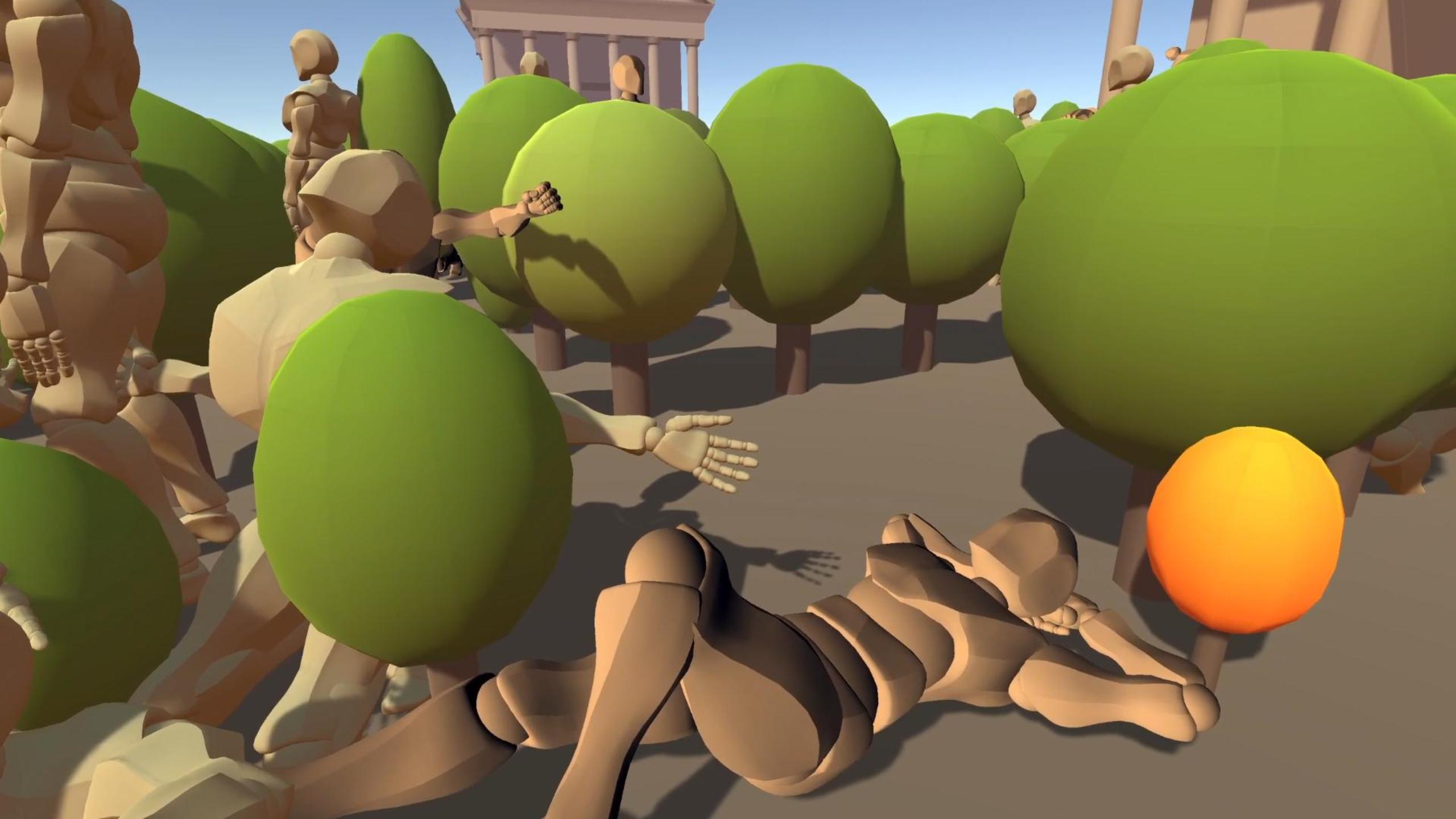
Theme
Play & Object
Since I determined to design a lot of mazes this semester in APD, this time, I observe ancient Roman statues as my objects, and material for a maze. Statues here are also a metaphor that presents a common sense that society, which is composed of human beings is also a giant maze, that makes individuals feel overwhelmed somehow. However lost outsiders can get to know others, and perceive the truth of knocking on the right person's door, who will help them to overcome obstacles in social life.
Watch Object Maze here.
Method
First, I made some paperwork of ancient Roman and imagined they were walking among the ruins as they were alive. Then I considered how they construct a maze, a mankind's maze, or something related. In that case, I thought of statues that transformed from live Roman thousands of years ago. so they both have facets of objects and obstacles that can seal the player. Once I figured out the game flow, I buildup the maze with uncounted sculptures in Unity, and applied them with standard sand material. To a few statues, I applied a disintegration material as they can be touched to disappear and with highlight to guide the player. I mocked up this step in the video. Besides, other ways to highlight these interactive figures could be planting flowers(orange ones) around the doors that symbolize life, or disguising them with dangerous spikes, even if it's the right way. Other objects such as waterpots could also work well.
Context
According to broader concepts of maker culture in the book Maker Culture – Information, People, and Technology (unizin.org), playing with objects can happen in any situation. the ability to put unrelated objects and their disconnected functions together, and create a new one with advanced functions is astonishing in the design field. So although Mazes were created by ancient Romans as entertainment tools for thousands of years, I can still use new materials such as statues to set up a maze and push forward its entertaining aspect.
Reflection
In this design process, shifting ordinary sculpts to maze objects and letting the disguised doors disappear is amusing, especially, when the sculptures are turning to ash by clicking the cursor. This weekly practice is more like reviewing the similar theme from CPS. Last time I misunderstood the concept a lot and did not respond cohesively, which was finding the internal connection of ordinary objects through odd and notional ways. Hence along with unrelated ideas deriving from references and daily life, I should try hard to remap them with certain new 'cogs'.
